Be aware › Pets and Wildlife

Dogs and Wildlife

Utah’s wild spaces are wonderful areas for you and your pets to exercise and enjoy nature. But these spaces are also home to wildlife and are essential to their survival.
When recreating with your dog, be aware that your dog may be an attractant to animals like coyotes or cougars, who may view it as a threat or as prey. Also keep your dog clear of other wildlife such as moose, porcupines, mule deer, raccoons and rattlesnakes.
Dogs off leash can disturb nesting ground birds, chase, injure or kill small mammals, deer, elk or moose.
- Keep your dog’s vaccinations up to date.
- Moose can be especially aggressive toward dogs.
- Always supervise pets when outdoors, particularly at dawn and dusk.
- Avoid going near den sites and thick vegetation.
- If you find an animal carcass, leave the area; it could be a kill that a cougar is guarding or will be returning to.
- Make noise while hiking.
- Do not allow dogs to play with or chase wildlife. It is against Utah law to allow dogs to chase or harass wildlife.
If you encounter wildlife: Keep your dog leashed and under control.
Always give the animal a clear escape route. Do not crowd the animal; doing so could make it stressed and unpredictable.
- Stay calm; do not run.
- Pick up small pets and children.
- Appear as big and as loud as possible.
- Stomp your feet, and clap your hands.
- Shout in a loud, authoritative voice.
- Throw sticks or rocks at the animal if it approaches.
- Do not turn your back. Face the animal and back away slowly.
- If attacked, fight back!
- Rattlesnakes: Stop and listen to where the rattle sound is coming from. Don’t jump or run. Slowly back away.
- If a moose or deer knocks you down, curl into a ball, protect your head and lie still until the animal retreats.
- Porcupines: The quills are barbed and can embed in the skin. Consult a veterinarian to have the quills removed from your dog.
- If your pet is bitten, consult a veterinarian to have the wound treated as soon as possible.
If you have an encounter with aggressive wildlife, please alert the Utah Division of Wildlife Resources office near you. If the encounter occurs after hours or on the weekend, please call your local police department or county sheriff’s office, who can contact a conservation officer to handle the situation.
House Cats and Wildlife

House cats, due to their predatory nature, do pose a threat to wildlife populations such as songbirds and small mammals. Free-roaming house cats can be an attractant to bring wildlife, like coyotes, into a neighborhood.
The cats themselves are often at risk of being preyed upon by larger predators, like coyotes, foxes, raccoons, cougars, skunks, raptors and domestic dogs. The human safety risk is higher once wild animals find a food source close to urban areas. Cats can also contract diseases, like rabies, from coming in contact with wildlife.
Training Your Cat to Become an Indoor Cat
To protect our pets and wildlife, here are some tips to turn an outdoor cat into a happy indoor cat.
- When acquiring a new cat, keep it inside from the start.
- Gradually decrease the amount of time your cat spends outdoors and increase the time indoors. This may be easiest to do during the winter months.
- Provide indoor activities such as cat condos, window perches, interactive toys and scratch posts.
- Offer fresh cat greens often.
- Provide an outdoor enclosed and covered room, patio or run. The cat can access the safe outdoor area through a cat door or window door. There are several commercial cat runs and outdoor cat exploring cages available at pet supply companies.
- Consider leash training to supervise the cat’s time outside.
Protecting Pets
- Keep vaccinations current.
- Spay and neuter.
- Do not let pets outside at night.
- Provide a reflective collar with identification and a bell to warn wildlife of the cat’s presence.
- Keep cats indoors during the spring baby bird season.
- Trim your cat’s nails every one to two weeks.
Note: if behavioral problems arise once a cat is denied access outdoors, they can usually be attributed to boredom. Be patient and review the steps you took to keep the cat indoors. Talking with your veterinarian or a cat behavior specialist can be helpful.

